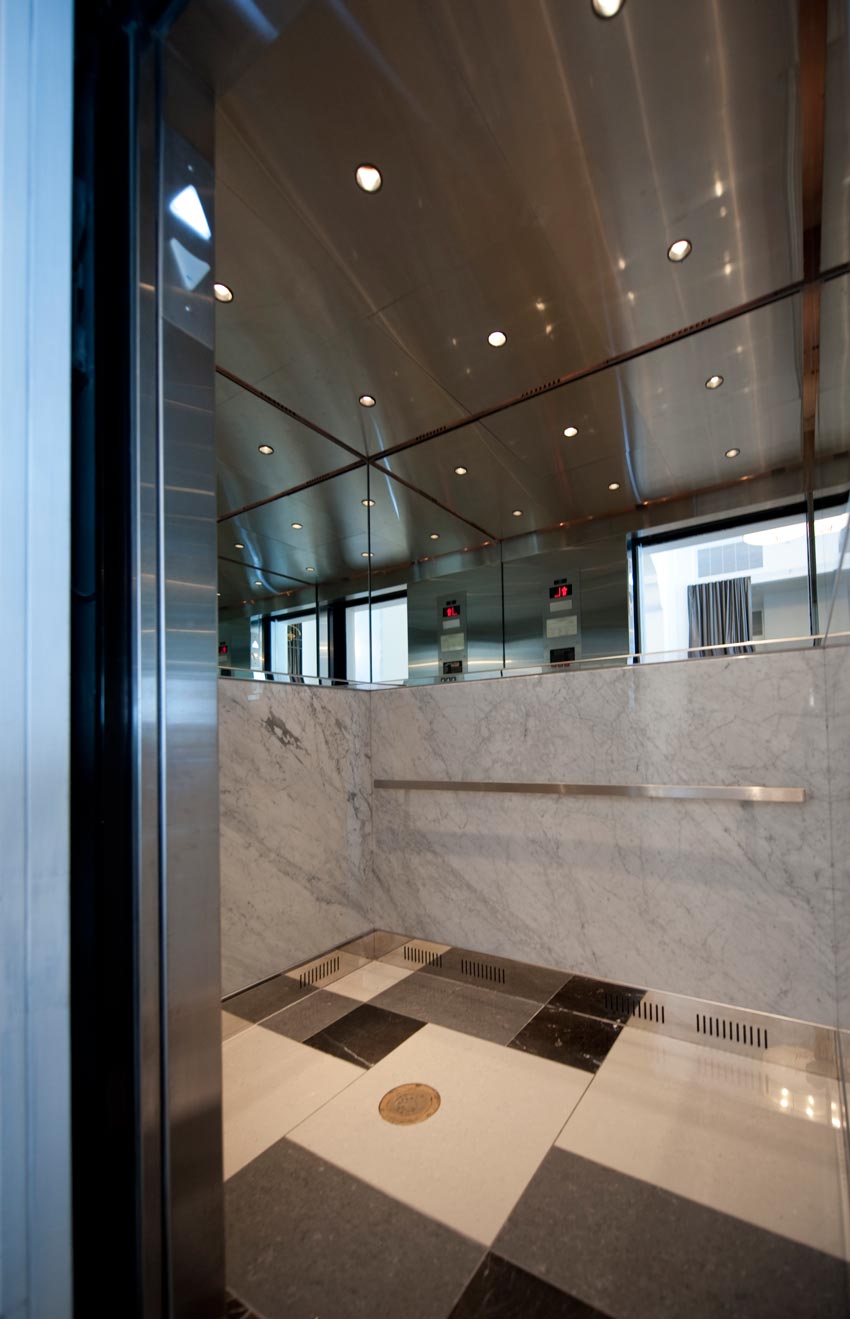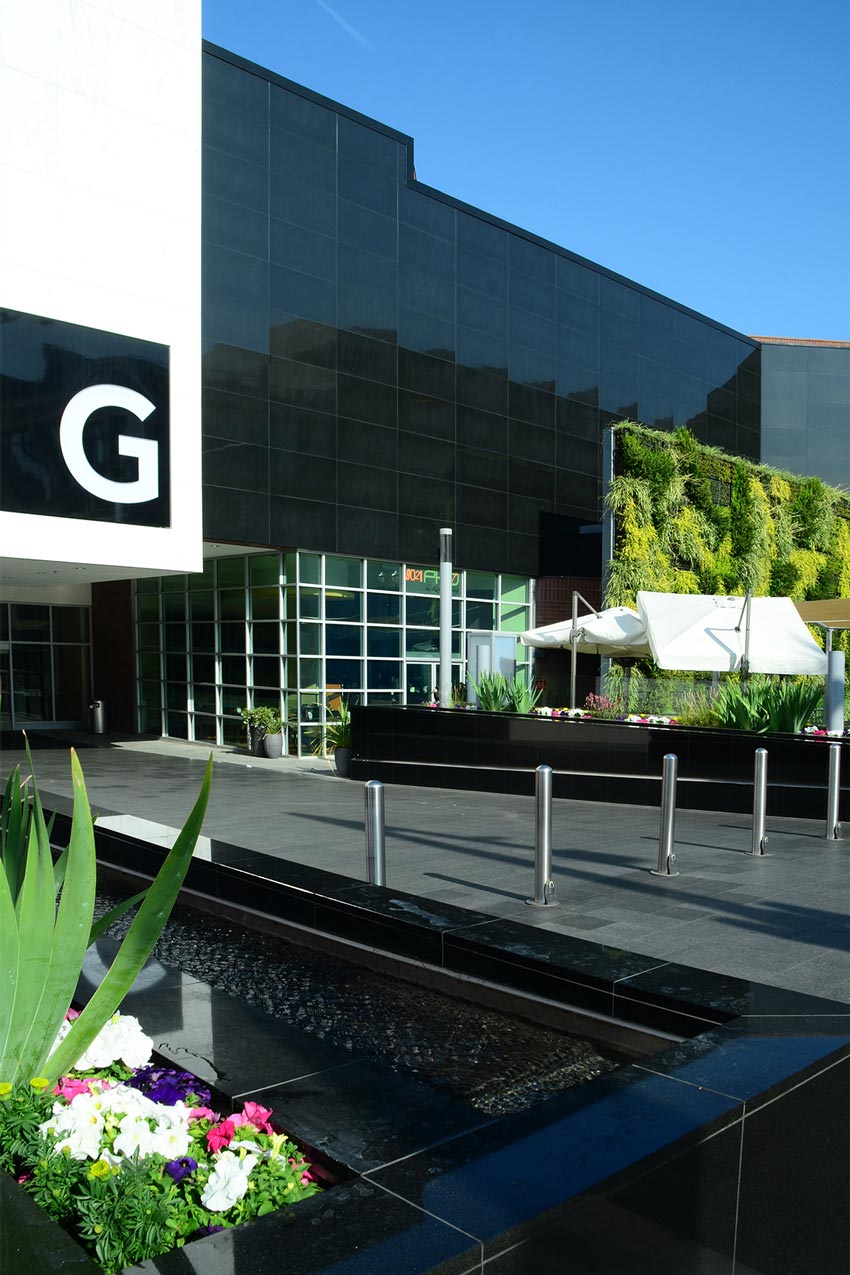Enhancing the Stone
How Stone Veneer on Aluminum Honeycomb Panels Enhance the Project—Inside and Out
Stone veneer on aluminum honeycomb panels offer designers and owners the beauty, low maintenance, and quality look and feel of natural marble, granite, travertine, or limestone. But unlike heavy and fragile stone slabs, stone on aluminum honeycomb panels are lightweight, strong, and easy to install, offering design freedom to use them in ways heavy slabs cannot be used.
According to a project manager for StonePly, a manufacturer of natural stone veneer panels, “Honeycomb-backed stone panels are an innovative solution to natural stone. The lightweight panels cut installation cost and time without sacrificing the beauty of having natural stone on your project. With the reinforced honeycomb backing, you also gain strength and durability, eliminating many of the problems faced with solid stone slabs.”
Stone on Aluminum Honeycomb Panels vs. Traditional Stone Cladding
There are several important advantages of stone on aluminum honeycomb panels:
- Traditional stone panels weigh approximately 27 pounds per square foot. Stone veneer on aluminum honeycomb panels weigh between just 3 to 4 pounds per square foot.
- Traditional stone panels are prone to bowing because of thermal hysteresis. The outside facing surface of the stone panel expands and contracts as it is exposed to warmer then cooler temperatures. In some cases, the panel does not contract fully, which is what leads to bowing. A greater load is placed on the stone anchors as a result.
- With stone veneer on aluminum honeycomb panels, the entire surface of the stone is attached to an aluminum honeycomb backing using epoxy. This eliminates weak spots and gives the marble cladding superior rigidity and flexural strength.
- Stone veneer on aluminum honeycomb panels are more cost effective since they’re lighter and faster to install.
- The honeycomb core has thin aluminum-walled cells. It is similar to the vertical element (the web) of an I-beam separating the reinforced skin on the stone side from the skin on the backside. This, along with the attachment system, increases the panel’s stability after installation.
Let’s take a closer look at some of the cost savings associated with stone veneer on aluminum honeycomb panels.
Cost advantages. There are several cost advantages of using lightweight stone on aluminum honeycomb panels. A major cost reduction can result from the speed of installation. Since the panels weigh about 80 percent less than solid dimensional stone, they can be lifted and installed by hand or light boom lifts. Since the need for extra manpower and specialized equipment is eliminated, installation can be as fast as up to 15 times that of traditional slab stone.
Another cost advantage is in the reduced structural support needed. Since the panels are considerably lighter than solid slabs, the load on the building's structure is greatly reduced. On larger projects, this can amount to millions of pounds of reduced weight. Savings on structural steel and concrete alone are often more than the price of both the panels and the installation. Additional savings come from reduced shipping and logistics.
Labor costs, too, are reduced not just by the reduced weight and speed, but by the simplicity of the system. Since these stone and aluminum panels can be installed by carpenters, more readily available trades can be used to get the job done.
Applications
Stone on aluminum honeycomb panels are used in commercial, hospitality, financial, government, retail, educational, and mixed-use construction projects throughout the world. Designers can use the panels on everything from high-rise facades, ceilings, and soffits to specialty elevator cab interiors, toilet partitions, and other areas where slab stone is too heavy or too weak to use. The lightweight panels are quick and easy to install, making them ideal for fast-track projects.
The panels allow designers the durability, beauty, and high-end appearance of stone in a lightweight panel. Thanks to the low weight of the panels, the load on the building’s structure is minimized. The panels offer speed of installation, hurricane resistance, and seismic resistance.

The lightweight properties of stone on aluminum honeycomb allow its use in areas where weight is a concern, such as here on the elevator cab walls at the Padre Hotel in Bakersfield, California.

The exterior facade of Glendale Galleria in Los Angeles showcases stone on aluminum honeycomb panels.









